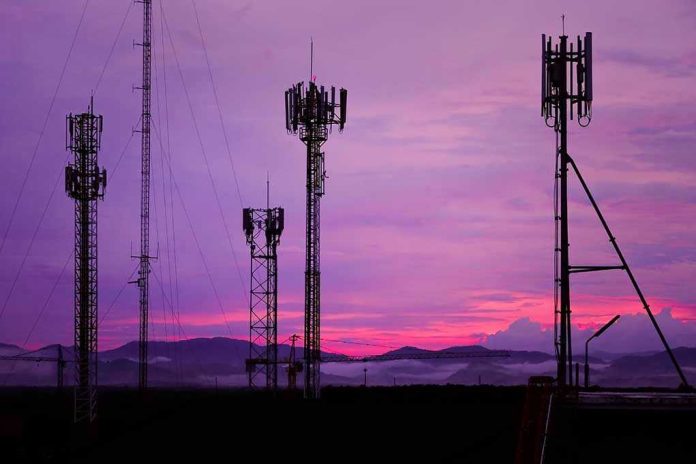
Scammers have found a terrifying new way to exploit technology, using fake cell towers to send out 100,000 scam texts per hour, raising significant concerns among consumers and authorities alike.
Story Highlights
- Fake cell towers used to send 100,000 texts per hour.
- Scam texts are targeting individuals nationwide.
- Authorities are struggling to keep up with technological scams.
- Consumer awareness and vigilance are crucial in combating these scams.
Technological Exploitation by Scammers
Scammers are now driving around with fake cell towers, known as “IMSI catchers” or “stingrays,” to send out massive volumes of fraudulent text messages. These devices mimic legitimate cell towers, tricking nearby phones into connecting to them. This method allows scammers to send up to 100,000 texts per hour, vastly increasing their reach and potential victim pool.
"Scammers Are Now Driving Around With Fake Cell Towers That Blast 100,000 Texts Per Hour" – Futurism #SmartNews https://t.co/yf4JQNoRCO
— Silver Knights Soc. (@GregCarter1971) September 21, 2025
The fraudulent texts often appear to come from trusted entities like banks or government agencies, which can lead individuals to unwittingly share personal information or fall victim to scams. The rapid deployment and mobility of these fake towers make it challenging for law enforcement to track and shut them down effectively.
Impact on Individuals and Security Measures
The widespread nature of these scams has raised alarms among cybersecurity experts and law enforcement agencies. Consumers are advised to remain vigilant, verify any suspicious messages, and avoid clicking on links or providing personal information without confirmation. Despite the advanced technology used by scammers, consumer awareness remains a critical line of defense.
Authorities are working to develop strategies to detect and disable these fake cell towers. However, the technology’s advanced and covert nature complicates these efforts, necessitating collaboration across tech companies, law enforcement, and consumers to mitigate the threat effectively.
Legal and Regulatory Challenges
The use of fake cell towers for scams presents significant legal and regulatory challenges. Existing laws may not adequately cover the rapid technological advancements used by scammers, creating a need for updated legislation. Lawmakers are urged to consider new regulations that address the use of such devices and enhance penalties for technological scams.
"Scammers Are Now Driving Around With Fake Cell Towers That Blast 100,000 Texts Per Hour" – Futurism #SmartNews https://t.co/6UjqRqdbpf
— Resistance is Feudal (@nofarhorizons) September 20, 2025
While the technological landscape continues to evolve, the balance between innovation and security remains delicate. As scammers become more sophisticated, it is imperative for the legal framework to adapt in order to protect citizens effectively and uphold the integrity of communication networks.



